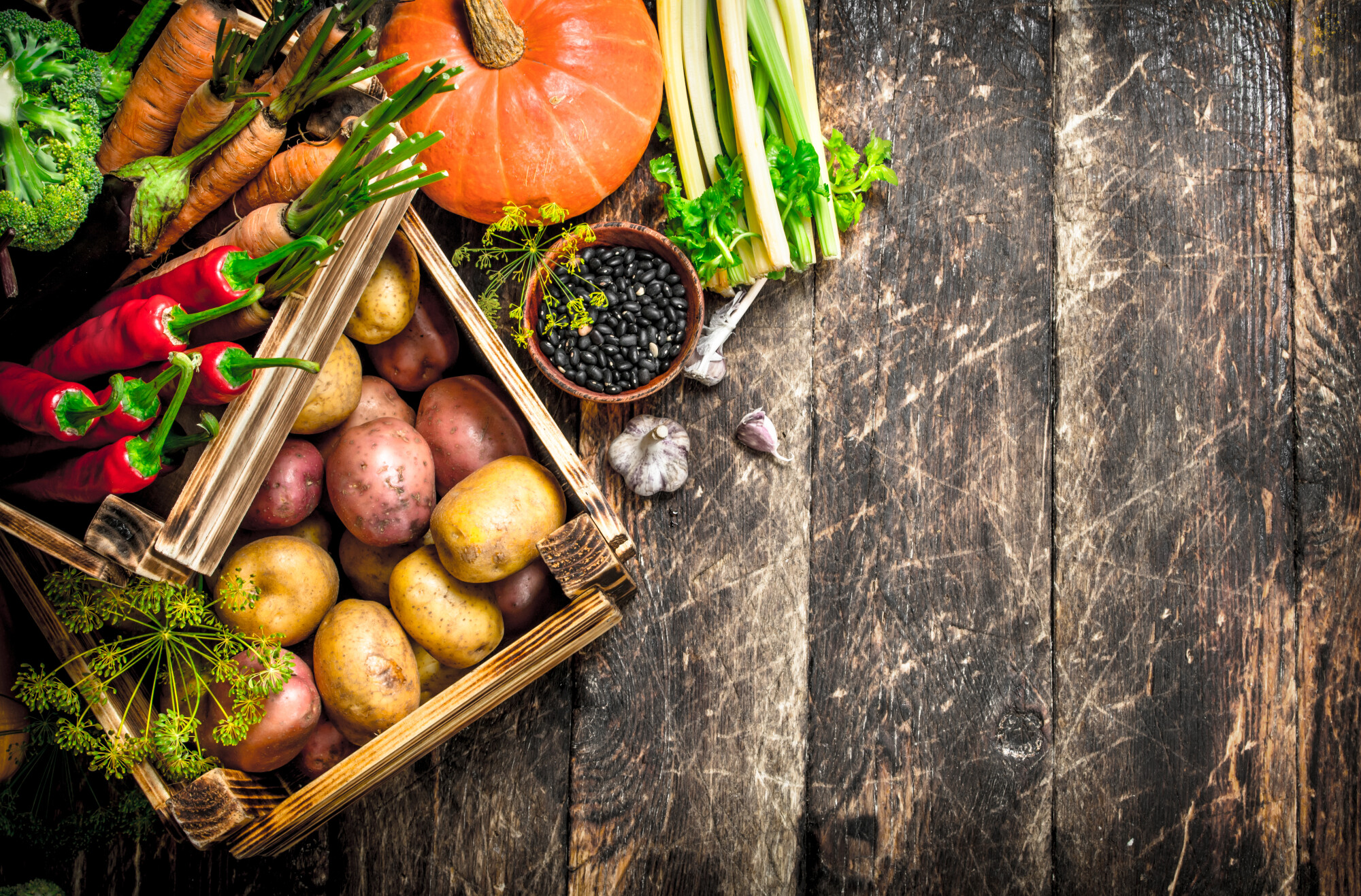
If you want to be healthy, you eat your vegetables. But what if those vegetables are the very thing that is making you sick? Over 70 percent of non-organic produce sold in the United States has pesticide residue on it.
You can avoid contaminated produce by starting your very own vegetable garden. Vegetable gardening requires a little space, patience, simple tools, and know-how.
When you finish reading this article, you will understand how to grow vegetables with just a few simple gardening tools.
Location, Location, Location
First and foremost, you must determine where you will put your vegetable garden. Location matters because a poor location will lead to poor vegetables. Look for an area that fits these criteria:
- Sunny spot: a place that has sun for at least 6 to 8 hours a day
- Excellent drainage: a place that drains well and keeps roots dry
- Sheltered: a place that is sheltered from the wind and run-off of flood water
- Quality soil: a place with nutrient-rich soil
If you do not have a location that fits this criterion, you can still make your garden. Many people have found success with a raised garden bed, a bed that you can put in a sunny, sheltered area. The raised bed will have nutrient-rich soil since you put the soil in it, and it will have excellent drainage because you’ll build the drainage in.
Start Small
You may want a plethora of vegetables from the start, but don’t overdo your garden from the beginning. Start small, and then build a more extensive garden once you fully understand the responsibilities of a vegetable garden.
Begin with a 10′ x 10′ plot if you plan on planting in the ground. You can grow four to five different types of vegetables in a smaller field like this.
If you plan on using raised beds, begin with two 4′ x 4′ beds or a 4′ x 8′ bed. Your space will determine how many beds you can have. Make sure you have adequate potting soil for these beds.
Raised beds will initially cost you a bit more because of the cost of potting soil.
If you plan on using containers, make sure you have sufficient depth in your containers for the types of plants you are planning on planting. For example, if you plan on growing tomatoes, make sure you have deep enough containers to support their root structure.
Know Your Zones
The success of your garden lies heavily on if you adhere to your zone’s limitations. Gardening zones are the USDA’s hardiness scale. Your geographical area’s average winter minimum temperatures determine your particular zone.
So a person who lives in Seattle will not be able to grow the same type of vegetables as someone living in Atlanta, for example. Your gardening zone tells you the length of your growing season and thus helps you determine when to plant and harvest your vegetables.
Pay attention to the type of vegetables you want to grow about the location of your plot. For example, if you picked hot peppers, but your plot only gets 4 to 5 hours of sunlight, your peppers may not grow because they require full sun. If you pick a plant or vegetable that requires partial shade, make sure your plot does not have full sun all day long.
What to Plant
For the maximum potential of success, pick easy-to-grow vegetables from the start. You can begin with the following vegetables:
- Tomatoes: you need five to six hours of sunshine and two square feet of space
- Salad greens: you need a shady area for most greens and full sunshine for kale
- Root vegetables: most root vegetables like beets, carrots, turnips, and radishes grow pretty easily
- Herbs: these grow easily as well and give you some great options for your kitchen
- Cucurbits: viny plants like squash and cucumbers grow quickly, but you need a trellis for them to grow on so you can easily find the fruit of your labor
All of these seeds and plants grow easily in well-drained, mostly sunny soil. Do not plant them in mostly shady areas. Try these vegetables first so you can have success, and then move on to the trickier vegetables.
More Challenging to Grow
The following vegetables are a bit more challenging to grow. They require more knowledge and attention compared to other seeds and plants.
- Cauliflower
- Celery
- Sweet Corn
- Eggplant
- Head Lettuce
- Muskmelon
- Onion
- Sweet Potato
- Artichoke
Don’t let this list discourage you. After you have mastered the simple vegetables, start adding in these vegetables a couple at a time. Before you know it, you’ll have a garden full of a variety of vegetables.
Seeds or Plants
Many people wonder if they should grow seeds or plants when they begin gardening. You can actually do both if you begin your seeds indoors. You can plant seeds in window green boxes, and then replant the plants in your garden.
Here are a few considerations as you think about whether you should pick seeds or plants:
Plant Type
Some plants simply grow better from seeds. Carrots and beets, for example, do not transplant well as plants. Thus you want to plant them as seeds.
Space and Patience
If you have the space, you can nurture as many seeds into plants as you want. You need adequate window space. You also need the patience to monitor the plants and water them regularly.
Money
Seeds cost less than plants. Thus, if you have a limited budget, plant seeds indoors, and nurture them into plants. You will be able to afford a bigger garden when you do the hard work upfront and begin it this way.
Prep Your Soil
When the child of winter has passed, you can begin prepping your garden area. You need to do only three things to prepare the area for your seeds and plants.
Begin by clearing out debris and rocks. Use a garden space to cut your sod into small squares. Then pry these squares up.
Next, loosen the soil at least eight inches deep. If you have a garden tiller, use it to loosen the soil. If you don’t have a tiller, look into either renting one or hiring someone to till your garden area.
You need at least eight inches of depth so your roots can grow adequately. Twelve inches is even better.
Then add organic matter to your soil.
You can begin creating this organic matter on your own with organic scraps from your kitchen. Have a slop bucket in your kitchen where you gather organic matter like vegetable peels, egg shells, and coffee grounds.
Then take this organic matter outside and begin stirring it in a corner of your garden. This can be your composting area. As the organic matter breaks down, it will create rich fertilizer for your garden in the spring.
Spread the organic matter over the top of your soil. Work it into the soil using a garden rake. Then level the soil with the same garden rake before you begin planting your seeds and plants.
Warm the Dirt
If you live in a cold area, use a raised garden to dry out your cold, wet soil. This soil will warm much more quickly than soil in the ground. Plus, you can cover the raised beds with black plastic to protect the plants and seeds from rain, snow, and erosion.
In short, the raised beds are just easier to control and maintain.
Tools You Need
To garden successfully, you’ll need a small collection of basic gardening tools. There are all kinds of higher-tech tools out there. But your biggest asset is your mind and work ethic.
Here are the basic tools you need:
- Hand trowel
- Hand fork
- Hand pruners
- Pruning shears
- Garden rake
- Watering can
- Wheelbarrow
- Garden fork
- Leaf rake
- Garden hoe
If your water source is a ways away from your garden, you will also want to invest in a high-quality hose and sprinkler. Pick a sprinkler that reaches far enough to reach your entire garden.
As you budget for your garden, make sure to include all of the costs. You will need to pay for seeds and plants as well as organic compost if you do not make your own. You will also see an increase in your water bill if you plan on watering your garden.
Vegetable Gardening Like a Pro
Vegetable gardening takes a little bit of knowledge and a lot of grit. If you’re patient and a hard worker, you’ll see your seeds and plants flourish into a bountiful vegetable garden in no time.
Pick the right spot, invest in tools as well as seeds and plants, and then take great care of your garden. In no time you’ll be enjoying the fruits of your labor.
Did you find this article helpful? If so, keep visiting our site. We seek to provide you with all the information you and your family to live a healthy life.



